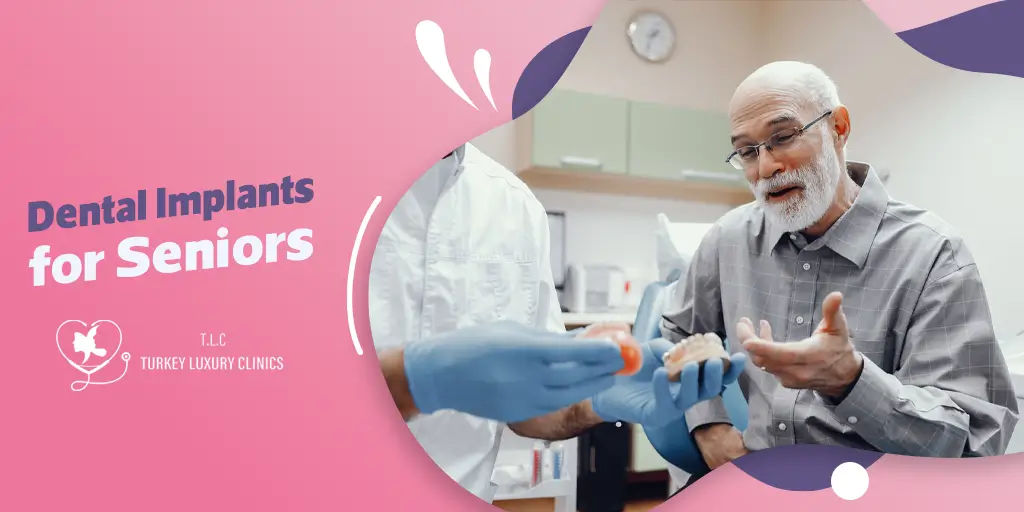- - Why Implants for Bridges?
- - What are the common concerns of most patients?
- - How does it work?
- - Key Takeaways
Dental implants have revolutionized the way we replace missing teeth. Instead of relying solely on removable devices like dentures, implants provide a stable, long-term solution that looks and feels natural. In this comprehensive guide, we'll explore how dental implants can be used to support bridges and achieve full mouth restoration.
Why Implants for Bridges?
An implant-supported bridge is a fixed restoration that replaces 3-4 teeth or more at a time. The implants act as anchors, holding the bridge securely in place. This method offers several advantages over traditional bridges that rely on natural teeth for support.
- Greater Stability: Implants provide a stable and secure foundation for bridges. Unlike traditional bridges that rely on neighboring teeth for support, implants are embedded into the jawbone, ensuring a strong and reliable anchor for the bridge. This stability allows individuals to confidently bite, chew, and speak without worrying about the bridge coming loose or shifting.
- Preservation of Natural Teeth: Another advantage of implants for bridges is that they do not rely on adjacent teeth for support. With traditional bridges, adjacent teeth must be reshaped and crowned to support the bridge. In contrast, implants act as an independent support, eliminating the need to alter healthy teeth. This preserves the natural tooth structure and reduces the risk of damage to adjacent teeth.
- Enhanced Aesthetics: Missing teeth can have a significant impact on a person's appearance and self-confidence. Implants for bridges are designed to closely mimic the look and feel of natural teeth. The prosthetic teeth attached to the implants are custom-made to match the color, shape, and size of the surrounding teeth, resulting in a seamless and natural-looking smile restoration.
- Longevity: Implants are designed to be durable and long-lasting. Made of biocompatible materials like titanium, implants integrate with the jawbone through a process called osseointegration. This fusion of the implant with the bone creates a stable foundation that can withstand the forces of daily use. With proper care, implants for bridges can potentially last a lifetime, making them a cost-effective solution in the long term.
- Bone Health Preservation: When a tooth is lost, the underlying jawbone can begin to deteriorate over time. Implants help to stimulate the jawbone through the pressure exerted during biting and chewing, preventing bone resorption. By preserving the integrity of the jawbone, implants contribute to maintaining overall oral health and preventing further dental complications.
What are the common concerns of most patients?
One of the fundamental aspects of comprehensive oral rehabilitation is the disclosure of the specific issues that require attention in the oral cavity. This encompasses functional, health, and cosmetic concerns.
Functional Concerns
- “I’m having trouble eating properly.” It could be because you're missing teeth and can't chew food properly. Or it might be because you're in pain and can't bite down on food properly.
- “I have a bit of trouble with some words.” This is something that can happen with missing front teeth or ill-fitting dentures that come off easily.
- “My teeth are a little wobbly.” It's likely that this is down to gum disease and periodontal disease, which often go hand in hand. Periodontal disease is a dental problem that can't be reversed. It erodes the bone that supports the teeth, making them wobbly.
Health Concerns
- “My teeth hurt.” Toothaches can range from a quick, sharp pain to a more long-lasting, consistent pain. If it's due to decay or infection, it'll get worse fast if you don't treat it.
- “My gums easily bleed.” Gum disease or gingivitis is all about good oral hygiene and general health. Gums bleed easily because of bacteria and irritants.
- I have bad breath”. Bad breath can have several causes, including plaque build-up or bacteria eating away at teeth.
Cosmetic Concerns
- I have stained teeth”. As we age, our teeth can become discolored. This can be caused by food or smoking.
- My dentures fall off.” Removable dentures loosen over time. Dental implants may be a better solution to prevent bone loss and pulling away of gums.
- My teeth aren't straight.” Some people get crowded or spaced teeth as they get older. This may be because they didn't take care of their teeth properly.
How does it work?
The process of full mouth restoration with implants typically involves:
- Initial Consultation and Planning: The dentist assesses the patient's oral condition and develops a customized treatment plan. This may involve taking x-rays and conducting a thorough examination of the mouth. In addition, any necessary preparatory work will be completed. This may include the removal of any teeth that are beyond repair or the extraction of any remaining tooth roots. The gums and surrounding bone will also be evaluated to ensure they are in good condition and capable of supporting the implants.
- Implant Placement: The dentist places the necessary number of implants in the jawbone. This is typically done through a surgical procedure where small incisions are made to access the underlying bone. The gums are then stitched up to allow for proper healing.
- Healing and Osseointegration: After the implants are placed, a healing period of several months is necessary to allow the bone to fuse with the implants. This process, known as osseointegration, ensures that the implants are firmly anchored in the jawbone and can provide a stable foundation for the bridges.
- Abutment Placement: Once the healing period is complete, the abutments are attached to the implants. These abutments serve as connectors between the implants and the bridges.
- Bridge Fabrication: Impressions are then taken of the abutments and surrounding teeth to create custom-made bridges that fit seamlessly in the mouth.
- Bridge Placement: the bridges are secured to the abutments using dental cement or screws. The dentist will carefully check the fit and make any necessary adjustments to ensure proper occlusion and bite alignment.
Key Takeaways
- Dental implants are small, titanium posts that are surgically placed into the jawbone.
- Implant-supported bridges replace 3-4 teeth or more at a time, offering greater stability and a more natural appearance.
- Full mouth reconstruction using implants restores both the function and aesthetics of the smile for patients missing most or all of their teeth.
- Latest advancements in implant technology include 3D printing, nanotechnology, and smart implants.
- The future of dental implants promises even more improvements in design and effectiveness.
- Consult with a qualified dentist or oral surgeon to explore if implants are right for you.
In conclusion, implants for bridges and full-mouth restoration are highly effective solutions for individuals with multiple missing teeth. Whether you require a bridge or a comprehensive restoration in both jaws, these treatments provide numerous benefits, including improved oral health, functionality, and aesthetics. If you have any questions about dental implants, please contact Turkey Luxury Clinics. Our team is happy to assist you in planning your next steps towards better oral health.












.webp)
.webp)
.webp)
.webp)

